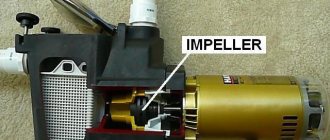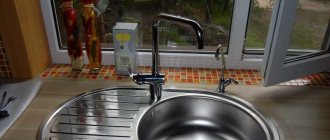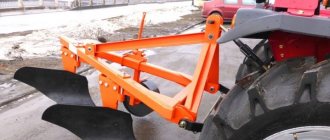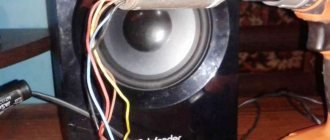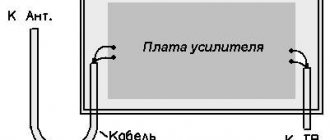At a summer cottage or in a country house there is not always a connection to the main water supply. Constantly going to the pump is a tedious task that requires some decisions. One of them, common and most popular among users, is drilling a well to an aquifer and then drawing water from it. For this, submersible pumps powered by a 220 V network are usually used. But what about those who do not have electricity on the site?
There is a solution to the problem, although it requires some effort. This is the use of a windmill to drive a pump, which does not require electricity, gasoline or any other type of fuel. Everything happens by purely mechanical means, which makes the method simple and accessible to everyone.
How to pump water without electricity?
There are quite a lot of mechanical methods for pumping water. Even in ancient times, a system was used with cups mounted on an endless chain, which scooped up water, rose up, tipped over, poured it into a container, went down and scooped it up again, etc. This system is simple and very reliable and is still used in the mining industry to lift ore through load shafts.
There are other methods similar to this, when plastic bottles or other containers are used. But they are all good when it is necessary to pump water from an open reservoir to a large container located a level higher. This method is not suitable for wells.
To lift water from the well, a pump is used, driven by a crank mechanism, which, in turn, rotates with the help of a windmill. The system at first glance is complex, but in practice it is quite feasible and does not require excessive costs (in some cases there are no costs at all). The design of the pump can be different, from a classic pipe with a piston and two check valves, to a gasoline pump from a car or other ready-made device. In this case, the following features must be kept in mind:
- For normal operation of the pump there must be a certain force on the rod
- The power of a windmill is limited by the speed of the wind, its size and weight. The larger its blades and other components, the greater the force it can develop, and the greater its resting inertia. In weak winds, such a windmill will not start, and strong winds do not happen often
- The depth of the well plays a big role - lifting water from great depths requires a lot of windmill power
All these circumstances force us to choose the “golden mean”, to find the optimal combination of pump performance and windmill size. Users who first build a powerful pump with a large windmill soon start thinking about creating a smaller design. According to their own statement, pumping a lot of water in a strong wind is good, but it is better to be able to pump it more slowly, but in any, even weak, breeze.
Combinations
Tyasker
Main article: Tyasker
To
Tyasker
in the Netherlands, then Tyasker
drainage mill with common sails connected to an Archimedes screw. It is used for pumping water in areas where only a small lift is required. The flywheel is mounted on a tripod, allowing it to rotate. An Archimedes screw lifts the water into a collection ring, from where it is discharged into a ditch at a higher level, drying the ground.[22]
Thai wind shoes
In Thailand, wind pumps are traditionally built using Chinese designs. These pumps are made of bamboo poles with wire brackets, carrying sails of cloth or bamboo mats; The vane pump or water pump is mounted on a Thai rotor with vanes. They are mainly used in salt shakers where the required water lift is usually less than one meter.[23]
How to make your own pump
If there is no ready and working pump, then you have to get out of the situation by any available means. Usually a ready-made but not working pump from a car (mechanical) is used, the compressor is rebuilt, in a word, any more or less suitable device that is available is used. If there is nothing suitable, you will have to assemble the pump from scratch.
The simplest pump design
The easiest (and most reliable) way is to use the most primitive, and therefore trouble-free design of a conventional pump. It is a cylinder, the lower part of which has a jumper with a suction pipe and a check valve. A piston moves up and down inside the cylinder, the bottom of which is also equipped with a check valve. When the piston moves upward, a vacuum is created in the suction pipe, as a result of which the cavity between the bottom and the piston is filled with water. Both valves are closed.
With the subsequent downward movement, the piston begins to pass water upward through its valve, and the lower valve closes, preventing water from escaping downwards. When the water reaches a certain level, it pours out through the outlet pipe, spout or other openings.
What determines the quality of pump operation?
The quality of operation of such a pump directly depends on the tightness of all elements. If the piston moves tightly enough and does not allow water to enter the gap between the cylinder walls and its sealing ring, then the device is capable of lifting water to a height of up to 8 m.
To make such a pump, you will need a sleeve and a piston with an o-ring. The trick is that the denser the piston, the greater the force required to operate it, which will require an increase in the power of the windmill. This path is a dead end, since only a hurricane-force wind can move a heavy windmill, so it is necessary to select the mechanics of the pump so that it does not require too much effort.
In addition, serious attention must be paid to the operation of check valves. They should operate very easily, without effort, but block the path of water quite reliably. Conventional gravity valves, or more reliable spring-loaded designs that do not “stick” in the open position, can be used.
The quality of the check valves determines the operation of the pump even more than the density of the piston.
What can a pump be made from?
The pump can be made from various materials:
- metal
- plastic
The choice is not very extensive, but in this case a long list is not required. A metal pump is stronger and more reliable, but its manufacture will require access to lathe equipment. In addition, the material for the manufacture of device parts should be metals that are not subject to corrosion - stainless steel, duralumin or brass. This is the first and main condition, the observance of which makes the pump strong and durable.
It is not recommended to use ready-made pipes, since the internal profile does not always have an ideal round shape, which threatens to reduce pump performance. You can use ready-made parts from other devices that are suitable in shape and size, if available.
DIY plastic pumps At the same time, in winter they become fragile and can simply burst. This circumstance must be kept in mind and try to somehow solve the problem before the onset of cold weather. Assembling the pump is possible with your own hands without contacting a workshop or specialized organization, since the starting material is usually polypropylene water or sewer pipes, which have various components that exactly fit them in size.
All that remains for the master is to select the most suitable elements, make a sleeve and piston, cover the lower part of the sleeve with a plug and connect it to the suction pipe. As a check valve, you can use ordinary rubber attached to one end of the plug. When the piston moves up, it will rise, allowing water to pass through, and when it moves down, it will fall and block the outlet. The performance of such a pump is usually somewhat lower, but, in general, it all depends on the accuracy and quality of workmanship.
References
- Lucas, Adam (2006), Wind, Water, Work: Ancient and Medieval Milling Technologies
, Brill Publishers, p. 65, ISBN 90-04-14649-0 - Donald Rutledge Hill, "Mechanical Engineering in the Medieval Near East", Scientific American
, May 1991, pp. 64-69. (cf. Donald Rutledge Hill, Mechanical Engineering) - History of Science: Power, Evidence and Passion - EP4: Can We Have Unlimited Power?
- Sarton, George (1934). "Simon Stevin of Bruges (1548-1620)". Isis
.
21
(2): 241–303. Doi:10.1086/346851. - https://www.yachtmollymawk.com/2008/11/spanish-water-works/ Water mills in Murcia Region, Spain
- ^ a b
"A Brief History of Windmills in the New World" - americanheritage.com
- fnal.gov
- Paul Geep, Wind Energy Comes of Age
, John Wiley and Sons, 1995 ISBN 0-471-10924-X, pages 123-127 - Water lifting devices; coordination of bladed rotors with pumps
- https://www.vintagewindmillpartslist.com/sitebuildercontent/sitebuilderfiles/butlerpictorial.pdf
- Iron Man Windmill Website Performance Calculator, retrieved January 15, 2011.
- Frequently asked questions on the Aermotor website, retrieved September 17, 2008.
- https://www.windmill-parts.com/index.html
- Argav, N., "Renewable Energy Sources for Pumping Water in Rural Villages", 2003, NREL Report 30361, p. 27
- Brian Vick, Nolan Clark, "Comparison of the Performance and Economy of a Mechanical Windmill with a Wind-Electric Water Pumping System," 1997, USDA Agricultural Research Service, see Figure 2.
- ^ a b
Howe, Erich “Wind Turbines”, 2005, p. 101, fig. 5-10 - ^ a b
Clark, Nolan "Variable stroke pump for mechanical windmills", 1990, AWEA Proceedings - https://www.econologica.org
- https://www.youtube.com/watch?v=6zIj7LCtX0U
- ENA Yelkapan Technologies Ltd.
- "Types of wind turbines." Odur. Retrieved 2008-05-24.
- Smulders, P. (January 1996). "Wind Water Pumping: A Forgotten Option" (PDF). Energy for Sustainable Development
.
11
(5). - Coil pump, often used in wind pump construction
Wind turbine device
The wind turbine design used for such a pump must be most efficient and sensitive to relatively light winds. There are two main types of wind turbines:
- horizontal
- vertical
Horizontal designs are considered more successful, since they use the energy of the wind flow much more efficiently than vertical wind turbines.
At the same time, to create a horizontal structure, it is necessary to ensure free rotation of the entire assembly around a vertical axis for homing into the wind. This results in two moving elements on one unit, which complicates the design.
Vertical windmills do not need guidance, since the direction of the wind does not matter to them, only the speed. At the same time, the flow simultaneously affects both sides of the blades, causing the rotation efficiency to decrease. There are different designs of such wind turbines, created to increase efficiency:
- Savonius rotor
- Daria rotor
- Lenz rotor
- orthogonal rotor
- helicoid rotor, etc.
Research in this area is ongoing, many engineers are busy solving the problem, so every year new versions with greater efficiency are announced. Thus, a structure was created from several blades, half covered with a special casing that hides the reverse sides of the blades from the wind flow.
The casing rotates freely around a vertical axis, but is not connected to the impeller. It has a stabilizer similar to the tail of an airplane, which adjusts the position of the protection when the wind direction changes. There are other designs that have certain advantages, but so far no one has achieved any significant success.
How to make a windmill yourself
Self-manufacturing of a windmill usually follows the following scheme:
- choice of design type
- creation of a project (working drawing)
- purchasing or sourcing materials
- rotating shaft assembly
- installing blades on it
- mast creation
- wind turbine assembly and installation
These stages are arbitrary; in each specific case, work is carried out in a way that is convenient for the master, but adhering to such a scheme is the most rational way of action.
The best option is a horizontal design, so it is better to choose it. To create it, you will need a horizontal shaft, blades diverging from the center like the wings of a mill, and a device for transmitting rotation to the crank. Typically, a rotating impeller is made, mounted on a turntable with a stabilizer, self-guided towards the flow. Rotation is transmitted by gear or chain transmission, depending on the capabilities or availability of one or the other device.
The dimensions of the blades should ensure that rotation starts at a relatively low wind, usually 33-5 m/s, but there are samples that start at lower flow speeds. For example, the Onipko rotor, according to the inventor, begins to rotate at a speed of 1.4 m/s, which is very attractive for regions with a calm atmosphere. There is also the recently introduced Tretyakov rotor, a rather complex design that captures the flow and organizes it so that it completely affects the impeller without loss. These designs are quite difficult to make on your own, as they have a lot of curved parts of a specific shape, which is difficult to replicate at home.
Content
- 1 Worldwide use
- 2 construction
- 3 Multi-blade wind pumps
- 4 Main problems of multi-blade wind pumps 4.1 Inefficient rotor
- 4.2 Poor load matching
- 4.3 Torque cycling
- 5.1 USDA experiments in Texas
- 6.1 Tyasker
Installation Features
The windmill is usually installed on a hillock, not far from the house, but so that no buildings block the wind. In our case, installation is carried out above the well, which eliminates the choice of the optimal location. Tying to a well forces you to put up with the possible presence of wind interference, or to make a higher mast that allows you to raise the windmill above the obstacle. This point must be taken into account at the installation design stage in order to immediately assemble a mast of the required height, eliminating the need for alterations or design changes.
A little physics for those who decide to seriously tackle the problem of water supply
The operation of a submersible pump is based on the rotational movements of a crank mechanism. A conventional wind generator allows the device to be put into operation. Its effectiveness has been proven by the practical experience of many summer residents who were able to understand the nuances of the mechanism and design it themselves. Indeed, despite its apparent complexity, you can assemble a wind pump with your own hands quite quickly and at minimal cost. The only condition is that when performing calculations and developing drawings, it is important to take into account several points:
- The deeper the well, the more energy is required to operate the pump, and the more powerful the new wind generator must be.
- For stable operation of the submersible mechanism of a wind water pump, there must always be some force on its rod. Otherwise, water will be supplied intermittently.
- When designing a wind turbine, it is necessary to take into account the strength of the wind on the site. The larger the device model, the more wind energy is required to run it. In light winds, such a generator will be at rest. But a large windmill has high power, unlike more compact models.
Experience shows that the initial choice in favor of a large wind generator eventually makes you think about purchasing or manufacturing a medium-sized device. Some power losses in this case are compensated by the stable operation of the windmill even at low air flow speeds. Moreover, in most parts of the country strong winds are observed relatively rarely.
Sailing wind generator "Vodokachka"
Another interesting model of a sailing wind generator. In this design, the energy imparted by the wind is directed to pumping water.
Materials and parts that the author needed to create this mechanism:
1) pipe with an internal diameter of 30 mm 2) canvas fabric 3) wooden cuttings with a diameter of about 30 mm 4) axle shaft from a classic vase 5) hub from a car 6) bolts and brackets 7) pipe with a diameter of 250 mm bearings 9) inner tube of a car
bearings 9) inner tube of a car
Let's take a closer look at the design of both the windmill itself and the pump with which it works.
What materials can you use to assemble homemade wind pumps for water?
The simplicity of the design of technical devices in most cases means their reliability. A DIY wind pump for water is no exception. The pump-shaped model does not require complex assembly and guarantees trouble-free and long-lasting operation. This design has the shape of a cylinder, the lower part of which is connected to a check valve and a suction pipe. Inside the cylinder, the piston moves in a vertical direction. The rarefied environment created when the piston is raised is filled with water from the well, which then enters the house through a pipe system.
The list of materials for assembling a wind pump with your own hands includes plastic and metal. Each option has its own advantages and disadvantages:
- Metal construction is stronger and more durable. To assemble metal pumping equipment, parts made of brass and duralumin are used. It is worth considering that not all alloys are able to withstand high environmental humidity for a long time. In addition, the manufacture of parts for such a pump requires turning equipment.
- Plastic models are not afraid of water. The design of such a wind-driven water pump is easily assembled from polypropylene pipes. A rubber attached to the plug can be used as a check valve. Moving simultaneously with the piston, it will rise, opening the way for water. And when the piston is lowered, the rubber part will block the outlet, thereby eliminating leakage. However, with the onset of severe cold, there is a risk of rupture of the structure due to the bursting effect of frozen water.
A simpler solution is to purchase a ready-made pump model of sufficient power. It will allow you to immediately proceed to assembling the wind generator structure and will save time on launching a new alternative water supply system.
The most common mistakes when purchasing
Dissatisfied consumer reviews can be explained by the desire to receive a quality product almost free of charge and to save on service and installation work. Therefore, many people buy relatively cheap equipment without really studying the technical characteristics and other nuances.
Since all types of alternative energy are quite expensive and a wind generator is no exception, sellers are trying their best to sell this product to the buyer. When the head of the company explains to his client that with a blade with a diameter of 4 meters he can get a power of 7 kW, for some reason he does not specify what type of wind.
The power of the wind generator will be proportional to the cube of the wind speed and the diameter of the wind wheel. That is, for regions with an average wind speed of 6 m/s, the power will be W6 = 4 * (6 * 6 * 6) = 864 W. The satisfied customer has no idea that his system will actually be 8 times more powerful than promised.
Therefore, when choosing a wind generator, you need to pay attention to: power, rated wind speed, blade diameter, choose the inverter wisely (with maximum efficiency and minimum no-load current).
